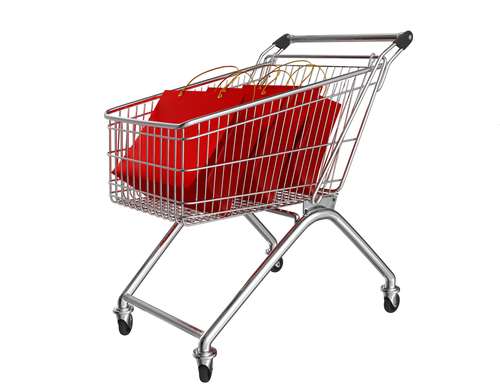As Australians and others queued to get their hands on the latest iPhone, John Collison – co-founder of internet payment company Stripe – was wondering how to make online shopping work in an increasingly mobile world.
This is of course not a problem unique to iPhone users but to users of all smartphones.
While it can be easy to browse an online store via a mobile phone, the problems arise when you decide to buy.
“Right now if you just go to buy something on your phone it’s an obstacle course and no one goes through with it,” Collison told the recent Dreamforce 15 conference.
The reason web checkouts on mobile are such obstacle courses is they were never designed for screens this small, according to Collison.
“The web cart checkout model that we’ve settled on where someone links you to a bag or shoes you like and you go to buy it on your phone, you then have to go through this 10-step checkout process to add it to cart and you have to type in all your details on this tiny little phone,” he said.
“The commerce experiences we have were designed for desktop, not mobile – they’re desktop-sized.
“So to go through the traditional shopping cart of a retailer takes five or ten minutes, which is fine if you have an hour uninterrupted on a desktop but when you have two minutes waiting for the bus it doesn’t work.”
What that means for retailers is they can expect much lower conversion rates for people browsing on mobiles compared to those coming in via traditional desktop browsers.
And if the trend continues to smaller screens and mobiles – and away from desktops – it could impact retailers’ bottom lines.
“If you go ask any retailer who sells online how their conversion rate is on desktop and then go ask about the conversion rate on mobile and you compare them, what all retailers are seeing is people are switching from browsing on desktops to browsing on phones, but they’re not buying on their phones.
“The figures that we have found from a macro industry perspective are that mobile phones represent 60 percent of the browsing time and 15 percent of buying.”
The trend, according to Collison, was “terrifying” for retailers.
“If you take [your] audience and it all goes to mobile your revenue might drop in half because the conversion is so much worse,” he said.
“In a few years I would be very surprised if we have not collectively as an industry solved this mobile problem, but it’s somewhat TBD how that gets solved. We need to figure something out.”
Stripe is backing in-app payments as a way to beat the desktop-oriented checkout system, though time will tell if this approach can resolve the wider issues of retail via mobile.
“All the successful mobile applications follow a few successful design patterns,” Collison said.
“If you look at an Uber or [grocery delivery service] Instacart, you can complete the entire transaction in the app and you can finish it in about a minute.
“We think in-app is going to be the way mobile commerce develops and not the web.”
Disclosure: Ry Crozier travelled to Dreamforce 15 in San Francisco as a guest of Salesforce.










